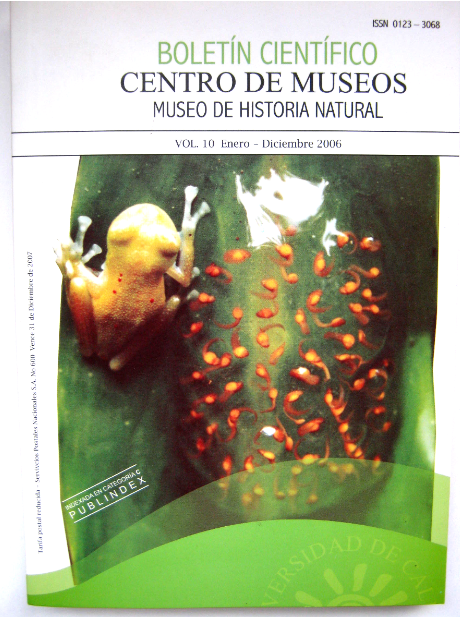Authors
Abstract
The vascular plants from the Río Blanco reserve, located in the northwest of Manizales, on the western slope of the Colombian Central Cordillera, between 2150 y 3700 m with nearly 4932 ha of total area, were characterized. The results presented 340 species (210 Magnoliopsida, 67 Pteridophyta and 63 Liliopsida) distributed in 98 families (68, 17 and 13 respectively) and 199 genera (134, 36 and 29 respectively). Orchidaceae and Asteraceae presented the highest number of species and genera. Polypodiaceae and Lomariopsidaceae were the most diverse families of the Pteridophyta group. Miconia, Elaphoglossum, Piper and Asplenium were the genera with the highest number o species. Nine taxa showed categories of extinction risk, two in critical state (CR), three vulnerable (VU), and four in the endanger category (EN). The reserve has a representative sample of the regional flora, since it holds many elements (species, genera and families) of the typical native flora included in the High—Andean zone of the country. However, the reserve is one of the last regional relicts of this kind of ecosystems, therefore it is necessary to increase the biological research to support any sustainable approach in the zone, including the ecoturistic development, since these must be compatible with the conservation of the zone and its environmental services.

 PDF (Español)
PDF (Español)
 FLIP
FLIP


















